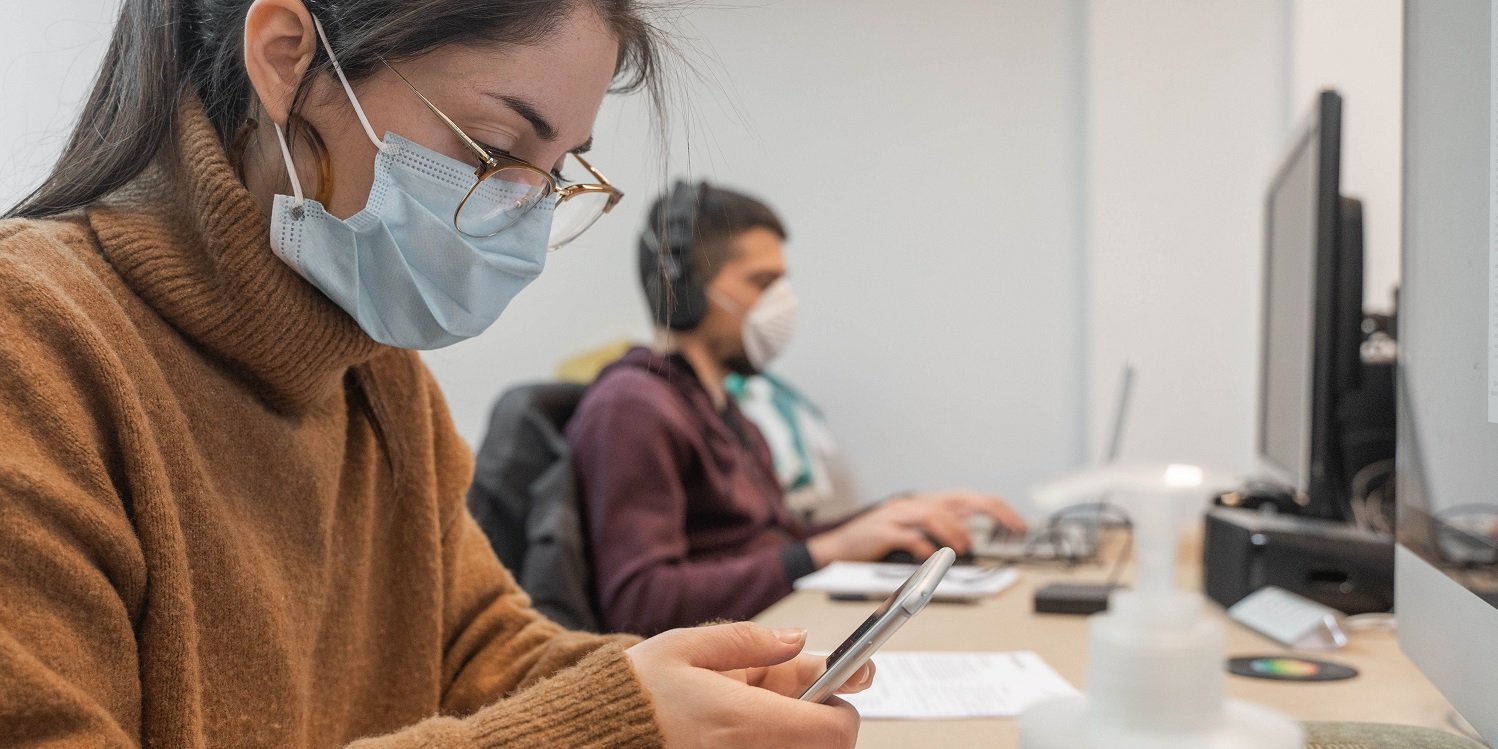HR Director Gemma Dale investigated how the COVID-19 pandemic affected the average number of sick days employees took in 2020. How does your business compare?
Every year the CIPD undertakes a comprehensive survey into absence in the UK. It takes a look at all aspects of workplace absence and attendance, including average sick days per year, the causes of absence, and how organisations monitor and manage their absence. Surveys such as these can help organisations to benchmark their own absence levels, as well as learn from others.
Absence is a considerable cost for many organisations and has obvious implications for productivity. Managing absence is therefore a key activity for businesses of all sizes.
Average sick days per year: 2020
According to the CIPD survey, in 2020 the average number of sick days in the UK was 5.8 per employee (compared to 5.9 in 2019, 6.6 in 2018, 5.9 in 2017, and 6.3 in 2016 according to past surveys in this series). This is of course, only an average, and the total number of sick days varies across roles, organisations, and sectors.
When it comes to managing sickness absence, comparisons are useful – but they will only take you so far. What really matters is your own organisational absence picture, and what you do about it. It’s not just average sick days that matter too, but what is causing absence and how the health and wellbeing of employees is supported.
How many absences are acceptable per year?
There’s no such thing as an acceptable level of employee absence each year– only what acceptable looks like in a specific context. Of course, for everyone, during the last year that context has been very different indeed.
Absence and COVID-19

The CIPD 2020 report shows that sickness absence is at its lowest in the 20-year history of the survey. On the face of it, this fact seems to be at odds with a data collection period that involves many months of a global pandemic that has not only created absence in its own right but that has also contributed to the decline of the mental health of many employees. There are several possible explanations – but it isn’t likely that this is a result of effective absence management procedures.
A large percentage of the workforce has worked from home during the surveyed period. The stay at home message not only leads to the reduced spread of the Coronavirus, but also those germs that often cause short term absence such as coughs, colds, and flu. Medical conditions that may have prevented employees from commuting may not be such an issue for an employee who does not need to leave the house. Finally, in a time of economic uncertainty, employees may be reluctant to take sickness absence in case it has a negative impact on their career.
Fewer absences during the pandemic – a cause for concern?
Although the headline data suggests that absence is down overall, according to a survey by NHS Digital there has been a marked increase in mental health absence during the pandemic, with this now accounting for 4 in 10 sick notes. This is perhaps no surprise when another piece of research, this time from the charity Mind, describes COVID-19 as a ‘mental health emergency’.
Learn more: Managing staff absence during lockdown
5 steps to reducing your employee absence

Whatever the causes of absence or average number of sick days taken, and whatever the wider context, there are a number of good practice steps that organisations can take to not only reduce absence but also support employees with their health and wellbeing.
1. Understand your own organisation’s absence
Before absence can be reduced, it needs to be understood. Accurate measurement and monitoring can help with the identification of trends. Consider key metrics like working days lost, average absence duration and primary causes of absence from work. This will ensure that efforts to reduce absence are targeted appropriately. For more on this, read my article on measuring absence data.
2. Train your people managers
Managers play a critical role in managing employee absence. In most organisations they will be responsible for return to work interviews, supporting employees or even managing through policies and procedures when absence reaches unacceptable levels.
Managers also have a significant influence over how well people are at work. When it comes to why employees take time off work due to stress, anxiety and depression, a key contributor is the employee’s relationship with their manager. Managers need to know both how to manage absence but also understand the role that they have in potentially creating and preventing it.
3. Promote wellbeing support services
Where organisations have internal wellbeing support services, employees should be reminded of them on a regular basis. This might include Employee Assistance Programmes, occupational health, activity groups or training. These can support wellbeing and therefore help to reduce overall absence levels.
Learn more: Is it time for workplace wellbeing to go mainstream?
4. Targeted interventions
As every absence is different and so is every employee’s personal circumstances, each absence or absence pattern calls for a unique approach. Sometimes specialist advice is required to identify how to help an employee in reducing their absence. Other times this is about taking a personalised approach to reasonable adjustments or support.
5. Return to work interviews
Return to work interviews are common practice and form part of many absence policies and procedures. There’s a reason for this – they work! They do, however, need to be well conducted. If it’s just about ticking a box or filling in a form then they are unlikely to drive real benefits. Effective return to work conversations can help to bring underlying issues to the surface and identify necessary support – as well as send a clear message that absence is closely monitored.
These tips and techniques are just as applicable during the pandemic as they were before it. However, right now it is important to take a flexible and supportive approach. This might include adjusting absence policies, supporting the specific mental health implications of COVID-19 and managing not simply through policy but equally with empathy and kindness.
Manage absences across your organisation more effectively with myhrtoolkit's absence management module
Read more from the myhrtoolkit blog
How to manage unauthorised absence from work
How to calculate a sickness absence percentage for employees

Written by Gemma Dale
Gemma Dale is an experienced senior HR professional, CIPD Chartered Fellow, HEA Fellow, and a regular speaker and writer on a variety of HR topics. Gemma is the co-author of the book 'Flexible Working' published by Kogan Page in 2020. She is also a lecturer in the Business School at Liverpool John Moores University and runs her own business, The Work Consultancy.


 Holiday Planner
Holiday Planner Absence Management
Absence Management Performance Management
Performance Management Staff Management
Staff Management Document Management
Document Management Reporting
Reporting Health and Safety Management
Health and Safety Management Task Management
Task Management Security Centre
Security Centre Self Service
Self Service Mobile
Mobile




